F089 08 AtmosFringe-Update 2-7 Bericht nach Update
Meanwhile we analyze fringsmap with the version 3.3 of AtmosFringe. First you have to create a fringesmap like this one, then you
load the image file to AtmosFringe, draw a circle round this and put a dot-line on every fringe, in this case from 1 till 11 .
At last you can get this kind of ANALYSIS REPORT. It's very important, that you insert the correct parameters and think about, what kind you
can subtract or not. Normally INPUT and OUTPUT Wave Lenght is the same value. Green with 532 nm wave. An autokollimation Setup "Wave
per Fringes" = 0.5 . In Radius of curvature setup the Wave per Fringes = 1 . If you analyse an Newton, you can remove Coma. Normally is's
not allowed to remove Astigmatism, Coma or Spherical. This Program AtmonsFringe gives you the Strehl-Value, calculated by a fringes map. 
History
The author of this program, Massimo Ricardi, Italy spent a lot of hours on the source, and
step by step, and the advices of some users of that extraordinary Fringes Analysing
Software this is the result now to solve some of the problems in analysis all kind of fringes
map. Especially for those astronomers, who want analyse Radius of Center fringes, as the
following fotos show. By the way this kind of analysing fringes is not the matter of a
Zygo, but most of the astronomers couldn't buy a new modern Zygo with all the very
expensive essentials round it. In a second step, I will show some of the calculation
problems, you have.
01. AtmosFringe - Version 2.7
The first Edition Version 1.4 was allready a very comfortable analysing programm and
Massimo startet this project more than two years ago. On Chrismas 2004 we got in
contact and so I've got every new updates for controlling and working with this - meanwhile
the best program an astronomer can get. So I will not repeat my report about V 1.4. I'll
just report of the interesting new features and implementations.
The AutoTracing of the fringes runs with great exactness, when you have a good
contrast of the fringes map and you select short dots distances. Very tricky is to put just
one point on every fringe and the program is drawing fringe by fringe in a short time. Very
important in this case is a sharp edge of the fringes map.
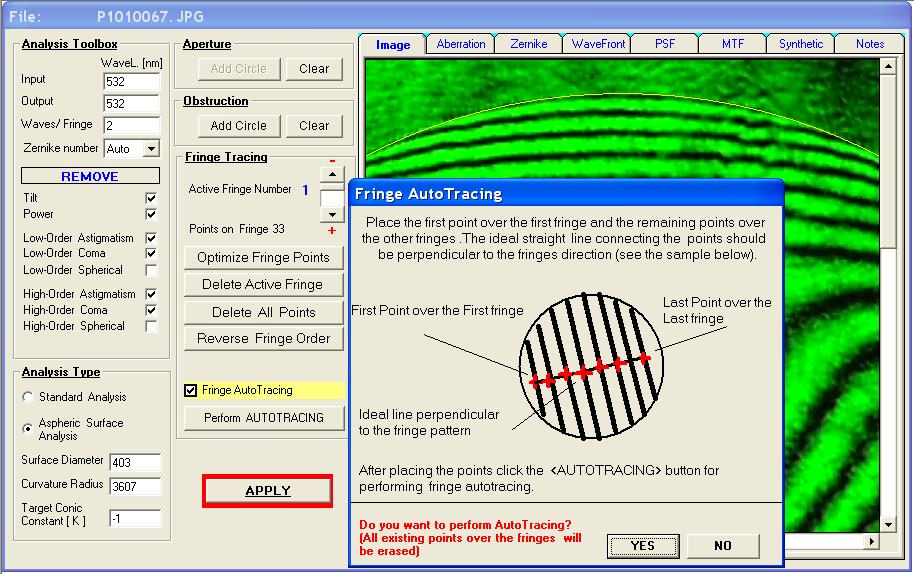
Now in this Version 2.7 it's possible to average several kind of fringes maps. So I had
to analyse a Newton mirorr 403/1803.5 in different setups, on at RoC(Radius of
Curvature) as a Zygo does, and in autokollimation or double pass setup. The four
exposures with the Bath-Interferometer and 532 nm wave show differents results, you
can't imagine them correct at the next foto.
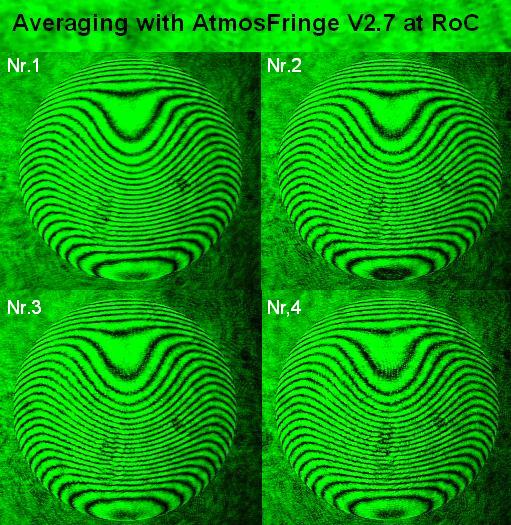
But if you calculate the four RoC fringes maps, there are very different values, of course.
Now this version 2.7 calculates the averaged results on basic of the Zernike coeffitiens,
the correct way of this. An arithmetic calculation with the PV- and Strehl-value is wrong,
as some astronomers did and shows different results, as you can see.
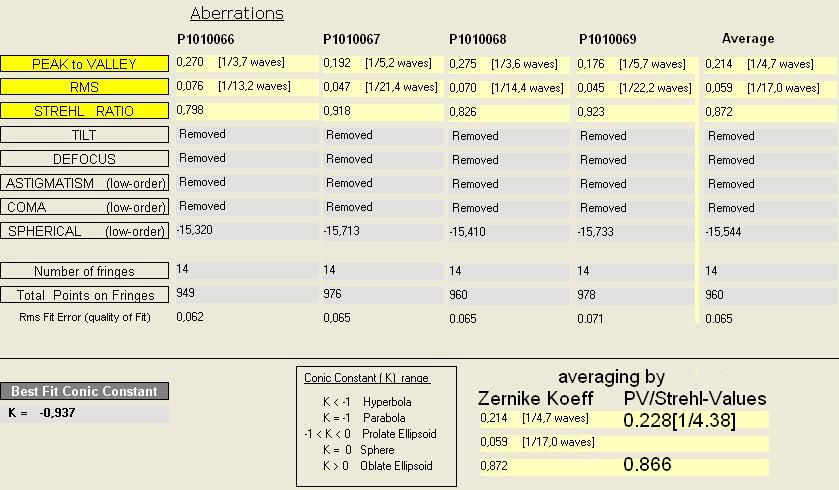
This is the fringes map of the best result, number 4. For analysing this fringes map you
have to know the exact optical diameter and the exact radius, and the edge on the foto
must be sharp. It makes a big difference if the sourrounding circle is not correct and if
the radius is not correct. The longer the radius in this example the smaller the
undercorrection of this mirror. So with 3660 mm radius instead fo 3607 mm the results
become better and better.

One big problem of the RoC analysing is the astigmatism. At first you have to look for a
significant astigmatism, because the air movement shows artificial astigmatism. So there
is the discussion, are you allowed to deactivate astigmatism or not. Coma you can
deactivate of course. So I use this test, that shows the actual situation. I guess there is
no significant astigmatism. But the new Version 2.7 allowes you subtracting values from
each of the Zernike coeffitients, in this case a definite amount of astigmatism. But then
we have to discuss the different orders of astigmatism: Low oder high order one as this
"Zernike Zoo" shows.
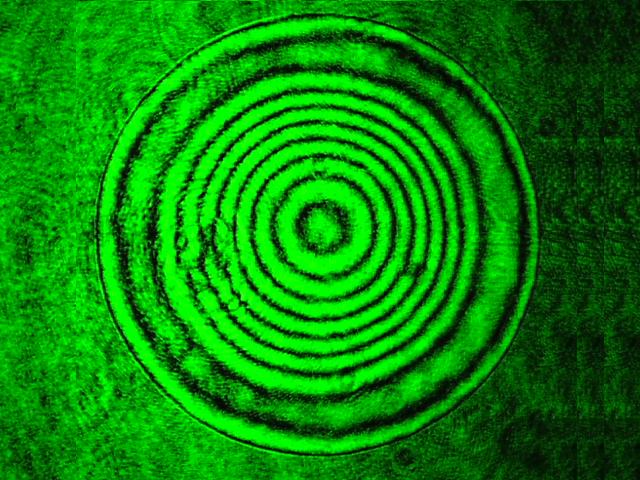
If you have a short focus mirror f/4.5 so you get a lot of fringes on your map. For this it's
better to draw the fringes as this foto shows and you insert 2 instead of 1 at
Waves/Fringes.
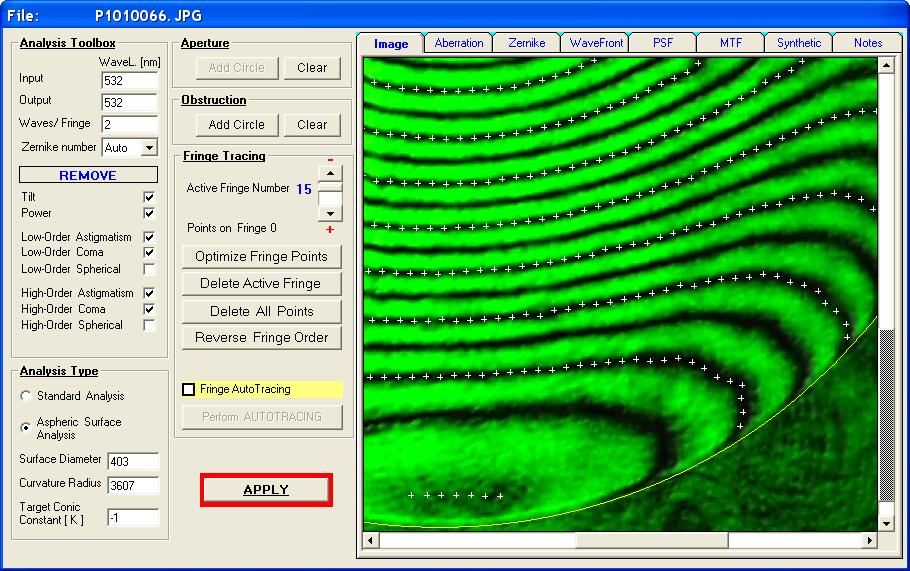
The next feature of this program calculate a RoC fringes map to a null-test as the Zygo
does. So it shows in a RoC map all the errors: Coma, astigmatism, undercorrection, that
you wouldn't see with your eyes and so you can imagine much better the errors of a
mirror.
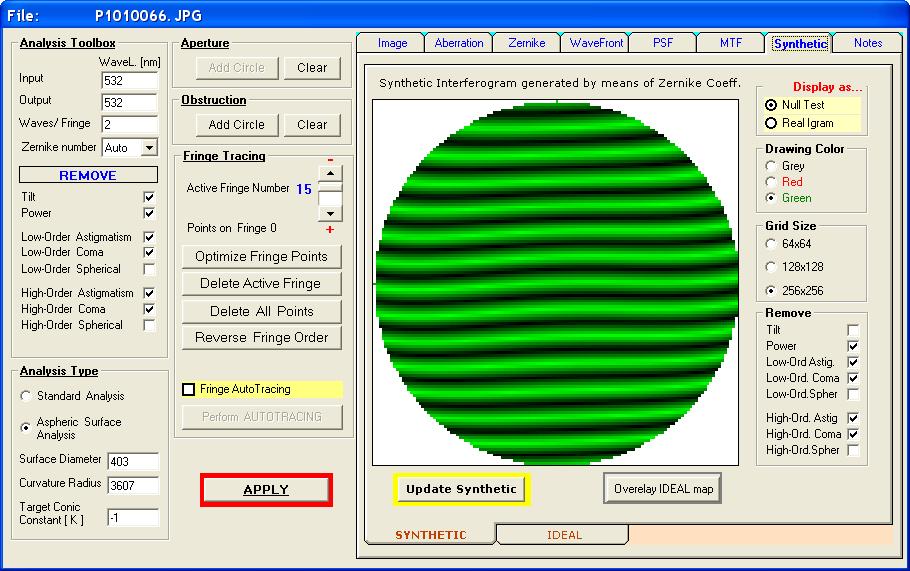
This shows the Certification Report of the actual version 2.7. In this case the best of the
4 maps.
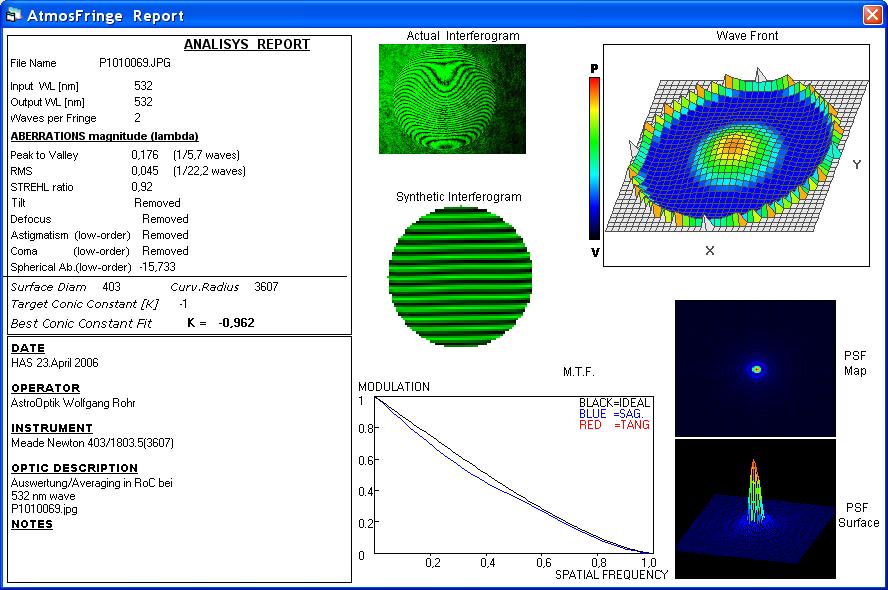
This foto shows the situation with Foucault or Lyot-Test, but in double pass.

There were a lot of questions we could check with a Zygo in my neighbourhood. And so
we noticed how important the correct supporting of a mirror is by testing it. Meanwhile I
can test with the Zygo, too. But most of the normal astronomers wouldn't pay for that.
But it would be possible.
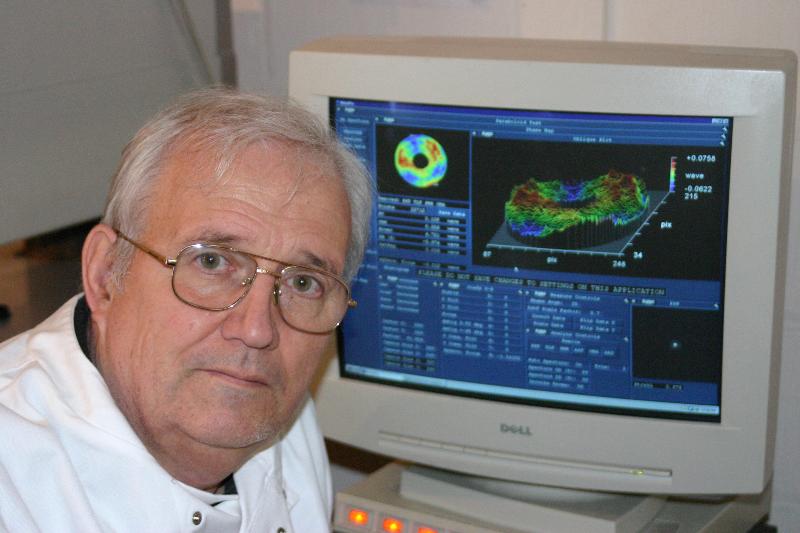
The next is following later.